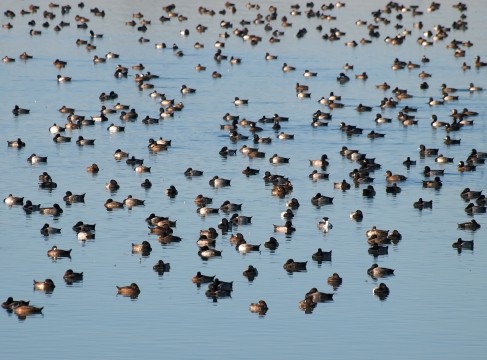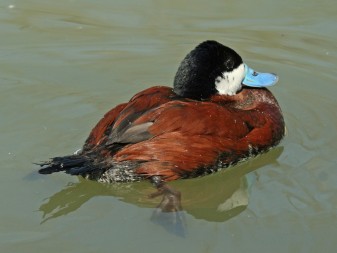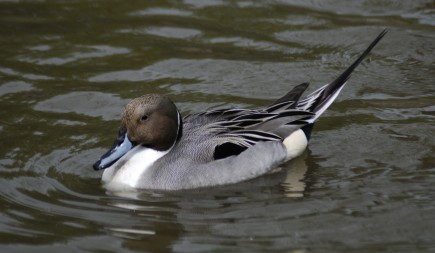
“The ducks would appear in flocks, darkening the air…” William Heath Davis; Yerba Buena (San Francisco). c. 1846.
Our winter ducks are getting ready to take flight for their summer breeding grounds. Subdued patterns have been replaced with vibrant breeding colors -- for the males at any rate. Any morning now, with the longer days and warm weather, we'll awaken and they'll have departed overnight.

Scientists generally divide ducks into three categories: divers, dabblers, and “Sea Ducks”. Here are a few of my favorites starting with the diving ducks. Ruddy ducks are built for underwater speed and agility, with their stiff tails used for steering underwater and large, webbed feet placed far back on their chunky bodies to propel them as they chase fish. Males are currently showing off their tawny red body feathers with bright blue bills set off against creamy cheeks. The females remain camouflaged brown with creamy cheek patches, good for sitting on nests unobserved. They’ll be migrating to Prairie Potholes soon where they’ll build nests in reeds suspended over shallow water.
Enchanting Northern pintail ducks remind me of graceful ballerinas. Their slim shape and longish neck -- accented by a “racing stripe” of feathers on the males -- and elegant head are the essence of refinement. The male’s tail, which have the longest tail feathers in the duck world, gives them their name. They seem to be continually enacting “Swan Lake,” including their habit of dabbling by tipping, butts up, to feed on underwater vegetation and insects. They’ll be migrating to freshwater ponds from California and northeast as far as Canada and Alaska. They nest on the ground in brush or grass where the female can sit camouflaged until the ducklings hatch.

Striking buffleheads, identified by the large white patch on the back of the male’s head and white bodies, are in the group known as Sea Ducks. Though they’re small, buffleheads migrate to Canadian and Alaskan breeding grounds in aspen and boreal forests near lakes and ponds. A few isolated populations nest more locally. They seek out woodpecker holes 5-20 feet above the ground for their young and mates stay together for several seasons, which is unusual among ducks.